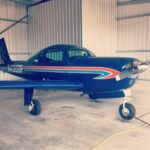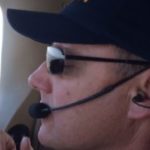This topic has 22 replies, 7 voices, and was last updated 5 years, 4 months ago by ![]() Doug Carroll.
Doug Carroll.
-
AuthorPosts
-
April 18, 2020 at 12:46 am #1902
Ed Pulliam
ParticipantFolks, I continue to be disappointed in the lack of participation among us as 200 owners. There are less than 100 of us with these gems and I see stuff posted with little response or feedback. I track the Twin Cessna and Beech Talk folks and they are very engaged. How do we change this??
April 21, 2020 at 2:27 pm #1904 Andy NixonParticipant
Andy NixonParticipantI’m eager to chat! What would you like to talk about here in the forum?
Andy Nixon
April 22, 2020 at 12:51 am #1905Ed Pulliam
ParticipantThanks Andy. There are so many things to throw out there. Maintenance, operations, lessons learned, etc.
For example-I had a great phone call a ways back with Nels Harding about approach speeds and pattern work and what to do given our 30’6″ wing span and the fact we give out of wing and sink like a rock below 100 MPH with MP below 15″. I have found that keeping it at 110 MPH DW and base to final and not dropping full flaps until on final and 16-17″ keeps the sink rate in check. And then flaring over the numbers with a little bit of power into ground effect works out. But I would love to hear what others say if they have experienced a better approach would be great. Plus I would love to hear best IFR practices as well in getting set up at the IAF inbound, etc.
Plus setting up for optimal cruise. 23/23 or is there something otherwise preferred?
That’s what I would love to hear from and LEARN.
April 22, 2020 at 1:12 pm #1906 Andy NixonParticipant
Andy NixonParticipantHi Ed!
Since I am new to flying the 200, so far I’ve honed in on 110 MPH for DW, 90 MPH on base and final. I have yet to use full flaps, only T/O setting for landing. Since the travel ban has been in effect, we have yet to take N430DP on a customer visit trip yet, so just been doing cycles in the pattern and stalls, etc. to learn the systems.
One thing I’m curious about – Looking at the metal elevator trim gauge, I don’t notice the needle move at all… Is it true it hardly moves or should I see it moving nose up or nose down? Thanks!
Andy Nixon
April 23, 2020 at 1:38 pm #1907Ed Pulliam
ParticipantAndy-are you talking about when you set flaps? Or when you set trim?
April 23, 2020 at 1:51 pm #1908 Andy NixonParticipant
Andy NixonParticipantEd – The elevator trim. See link for photo.
https://drive.google.com/file/d/1H6WbMqGcXoih-JdE9gF8zzlFNBSj_hid/view?usp=sharing
April 23, 2020 at 9:08 pm #1909 Tom ThibodeauParticipant
Tom ThibodeauParticipantHi Ed,
I typically fly a little slower than most, but 100 mph on DW, 90 mph on base, and crossing the fence (just short of threshold at 85 mph works fine for me. I carry a little bit of power into the flare, and roll it off as the nose comes up. You don’t want to try to flare at 80 mph without any throttle, as it will sink through to a carrier landing. I also tend to fly very tight DW legs <3,000 ft offset and continuous turn to final, pulling the power back abeam the desired touchdown point and setting gear down, 20 flaps, then 40 flaps and prop full forward as I roll onto final. No trim changes are required with this technique. You’ll find you are well above the VASI, but that’s fine, as I always try to keep glide energy to make the RWY while in the airport environment. VASI works for long stable Instrument approaches and not much else, if you don’t want to end up short with an engine problem.
Try this while aiming for the 1,000 ft markers (in case you undershoot touchdown point) on a long RWY so you can get accustomed to the sink rates and airspeed bleed off. Just don’t get below 85 until in the flare, and use power to adjust your glide path instead of pitch (to keep from getting slow).
If you do a true power off (idle) 180 Commercial maneuver, carry at least 115 on base (best glide) and 90 across the fence to give yourself a little extra energy for the flare and ground effect. Aim the the 1,000 ft markers and see how it goes. Airspeed control is critical, and if you find yourself low or slow, go around and try again. You may have to keep the gear up until base to final portion of turn to make the glide distance unless you stay very tight on DW and start your base turn almost immediately after reducing power (especially if you have a headwind on final).
Typically, I fly IAPs at 120 mph on final. This equates to approx 15 MP, 20 flaps, gear down. Once on short final, I’ll reduce power (carry a little above idle), set 40 flaps (not always if long runway), and prop full forward, crossing the fence at 90-85 depending on runway length. Always adjusting glide path with power while maintaining a constant airspeed (for timing).
Some things for you to practice …
VR, Tom
April 24, 2020 at 4:33 pm #1910Ed Pulliam
ParticipantTom-great info and thank you! Great stuff for me to work on next time I am out there. I flew safety pilot on Wed in a SR 22-my first Cirrus ride. Amazing how different from our old gals.
Andy-did you purchase Flip Comer’s 200?
And in the trim indicator-you are correct, it does not move much. As you are finding out, a slight twist of trim in either direction will get the desired result
April 24, 2020 at 4:36 pm #1911 Andy NixonParticipant
Andy NixonParticipantHi Ed – Yes, Flip’s aircraft is ours. Understood on the trim gauge. Knowing I was the last one to fly it, not a big deal, but just used to looking at a gauge before T/O and making sure things are set.
Andy
April 24, 2020 at 4:56 pm #1912Ed Pulliam
ParticipantI did not know Flip but am glad to hear his gal is in good hands. Welcome to the Meyers world Andy!
April 28, 2020 at 12:32 pm #1914 Andy NixonParticipant
Andy NixonParticipantThanks Ed! Look forward to meeting everyone once this crazy virus is under control!
Andy
April 29, 2020 at 5:23 pm #1915Ed Pulliam
ParticipantMe too Andy. Hang in there.
May 3, 2020 at 3:38 am #1916Mark Jensen
ParticipantPrior to take off, my partner would rotate the elevator trim nob full nose down and then back eight half turns. I have recently had the elevator trim reworked and adjusted according to specks. I now rotate full nose down and then back four half turns for take off. This adjustes the gauge where it should be for take off and is a little more precise than trying to eye ball the gauge but the gauge is a worth while double check.
May 3, 2020 at 3:44 am #1917Mark Jensen
ParticipantI have adjusted the half turns slightly to get the pitch contlol pressure I like for take off and initial climb.
May 3, 2020 at 1:54 pm #1918 Andy NixonParticipant
Andy NixonParticipantMark – That is great info! Thank you for that. Will try that out next time.
-
AuthorPosts
You must be logged in to reply to this topic.
